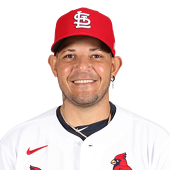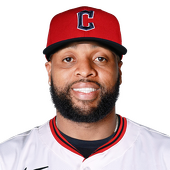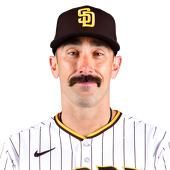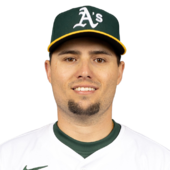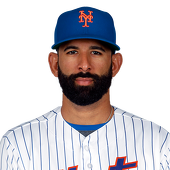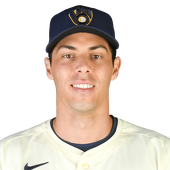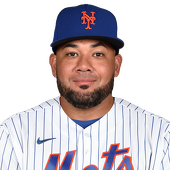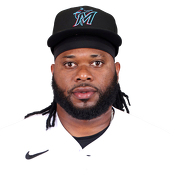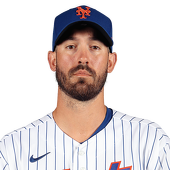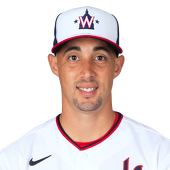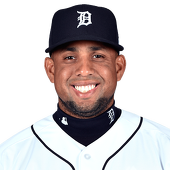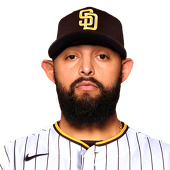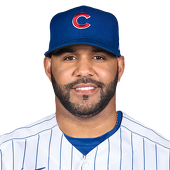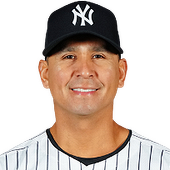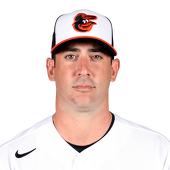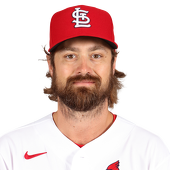2017 Fantasy Baseball Draft Prep: All-H2H and All-Roto teams highlight differences between formats with players like … – CBSSports.com
Just when you think you have a handle on a player’s value, the format question rears its ugly head.
“He’s more valuable in Format A than Format B,” Pundit C says on Program D. And you die a li
Well, you can live again, because I’m here to set the record straight for the two formats most played on CBS Sports: Rotisserie and Head-to-Head.
For the record, I’m referring to Head-to-Head points, as in Fantasy Football-style. But fear not, Head-to-Head categories owners: The Rotisserie evaluation would apply for you.
Understand that a good player is a good player regardless of format, and the same is true of a bad player. But degrees matter, particularly in a game that only digs into the upper crust of the player pool. Taking a player two rounds too early can make a big difference.
Keep in mind also — and this is crazy important — that the goal here isn’t to assemble the best possible lineup for each format but to showcase the most representative lineup for each format, highlighting the players at each position that see the most change in value between the two.
By the end, you should not only know which players excel at which formats but why, which should help you identify more of the same. And that’ll give you a leg up on your opponents using one-size-fits-all rankings.
All-H2H team
Based on standard CBS Sports scoring:
You want volume here — production in any one of its forms. And I do mean any one. All of those contributions that standard Rotisserie unfairly overlooks — doubles, triples, walks, etc. — are rewarded in this format, and best of all, they’re proportional. But while it’s more fair in that way, it doesn’t pay much regard to efficiency. ERA and WHIP do reflect how many earned runs, walks and hits a pitcher allows, but they aren’t directly rewarded and can be combated through volume — innings, primarily. The impact of strikeouts is also diluted for pitchers, further undermining the traditional measures of dominance.
Catcher
Molina used to stand out in both formats, but then he stopped homering a few years ago and has been treading water in Rotisserie ever since. It’s his low strikeout rate and unusually high usage for a catcher that save him in Head-to-Head points.
First base
Perhaps the captain of the All-H2H team, Santana is an on-base machine but a batting average drain. So naturally, the format that rewards walks will rate him much higher than the one that doesn’t. The gap only widens if he regresses from his career-high 34 home runs last year.
Second base
A 20-homer season is more or less the standard for the modern mixed-league infielder — one Zobrist is unlikely to meet. But he was the only qualifying hitter to walk more than he struck out last year, a talent that this format can fully appreciate.
Third base
The more Carpenter develops as a power hitter, the smaller the gap between his Head-to-Head and Rotisserie value becomes, but he’ll need to get back to hitting .300 to close it completely. It would have been wider last year if he hadn’t missed so much time, which drops a player faster down the Head-to-Head rankings than Rotisserie, but he still exceeded 30 doubles and 80 walks for the third straight season.
Shortstop
Diaz actually ranked higher in Rotisserie than Head-to-Head last year, but that was mostly a product of him playing only 111 games. His production had a distinct Head-to-Head flavor, which is why he outclassed some of the elites on a per-game basis. Rotisserie owners would prefer more home run assurances — like they’ll find with Trevor Story, for instance — but Diaz’s bat-on-ball skills make his power more than enough for Head-to-Head owners.
Outfield
Bautista is kind of like the outfield version of Carlos Santana. The gap wasn’t as noticeable when we could trust him to deliver elite home run totals, but he doesn’t need that to thrive in a Head-to-Head points league, as good as his plate discipline is. Yelich and Cabrera have even deeper power concerns, with Cabrera more or less confirmed to be a sub-par home run hitter. But both thrive peripherally — Yelich with his high walk rate and Cabrera his low strikeout rate — and get enough extra-base hits otherwise that their Head-to-Head value doesn’t depend so much on their home run totals.
Starting pitcher
The one thing all of these pitchers have in common is that they’re not known for their high strikeout rates, which obviously holds them back in Rotisserie, where strikeouts are one-fifth of a pitcher’s production. Strikeouts are still valuable in Head-to-Head points leagues, but at least in the standard CBS Sports format, they take a back seat to innings and wins, the first of which often leads to the latter if the innings are of any quality. These five are known for logging heavy innings and succeeding in spite of their strikeout rates.
Cueto is of course in a league of his own as far as that goes. Porcello has seen some ERA fluctuation over the years, but he’s so economical with his pitches and has such a strong supporting cast that he could flirt with a 4.00 mark and still thrive in this format.
Relief pitcher
Some starting pitchers are eligible at relief pitcher, and if innings are so valuable in this format, you can understand why they’d be a big deal. Duffy, of course, is the most valuable of the SPARPs (starting pitchers as relief pitchers) this year, showing ace potential for parts of 2016, and is more desirable than any closer in this format. Closers, though, are the only true relievers who matter, so role security is a big deal for them. Rodriguez has plenty of that even if he’s not the ninth-inning force he used to be.
All-Roto team
Based on standard 5×5 categories (BA, HR, RBI, R, SB for hitters and W, ERA, K, WHIP, SV for pitchers)
It’s all about the big five here, for both pitchers and hitters, and I do mean all about the five. No other stats are worth a darn, except to the extent that they might help predict the five. Not only that, but they’re all weighted equally and required on some level, creating an environment where a scarcity can inflate the value of a stat beyond its real-life utility.
One-dimensional players tend to rate higher in this format because they can serve as a quick fix for an area of need, but hitters are mostly just measured by their home run and stolen base totals. Pitchers aren’t in as high demand overall, but the quality of the innings matters more than the quantity, putting a premium on efficient bat-missers.
Catcher
If Gattis was ever assured everyday at-bats, he’d have plenty of value in both formats, as scarce as anything resembling production is as catcher. Last year was his best, but now of course Brian McCann is in the picture. Still, he may lead the position in home runs even if he’s not coming about them regularly, and his poor plate discipline is a non-issue in this format.
First base
Apart from Paul Goldschmidt, Myers is the one first baseman who you can trust to make an honest-to-goodness contribution in stolen bases, and hitters who can impact those two categories are almost automatically early-rounders. The stolen bases don’t quite make up for the poor strikeout-to-walk ratio in Head-to-Head points leagues, though.
Second base
Odor walked only 19 times last year, making his 33 home runs just the second most-notable thing about him in points leagues. For Rotisserie, though, he’s the perfect example of a one-note player who can help you make up ground in a category, especially at a position where the 30-homer guys are few and far between.
Third base
… And Frazier is an even more extreme example than Odor since he’s almost certainly going to hurt you in batting average. He’ll provide more of that one note, though, and with a little speed mixed in. A dozen steals is nothing to sneeze at from a third baseman, and he has contributed at least that many in three straight years.
Shortstop
The complete package that Villar provided last year is the source of much skepticism, but the one thing we know he can do is run like crazy. And as scarce as stolen bases are in today’s game, this is the format where drafting him early might not be such a disaster even if he takes a big step back as a hitter.
Outfield
If Carlos Santana is the captain of the All-H2H team, Marte gets the nod as the most representative Rotisserie player. He excels at batting average and stolen bases, the two contributions weighted most disproportionately by this format, and you won’t mind that he never walks. Cain is sort of the poor man’s version of Marte, though last year’s gap might have been smaller if he didn’t miss so much time. Speaking of missed time, Schwarber might by design as a left handed-hitting defensive liability on a loaded roster, but kind of like Evan Gattis, he’ll homer enough to matter in this format regardless.
Starting pitcher
If the All-H2H rotation was filled with steady-but-unspectacular innings eaters, then the All-Roto rotation is just the opposite: five pitchers who should dominate inning for inning but have serious concerns about their number of innings.
Hill is the most fitting example, but Darvish and Carrasco, with their injury histories, also fit. Harvey is more theoretical coming off thoracic outlet surgery, but the risk is a little easier to justify in this format. You’re not going to find a better bet for ERA and WHIP help at that stage of the draft, and if it doesn’t work out, a replacement-level pitcher is easier to come by. Maeda might close the gap this year if he makes good on his desire to throw 200 innings, but early hooks were the norm for him last year, limiting his opportunities for quality starts.
Relief pitcher
I dispute the idea that Miller was really the third-best reliever in Rotisserie last year since the formula doesn’t really account for the fact that capitalizing on his sparkling ERA and WHIP, albeit over a limited number of innings, would mean devoting one of your precious few lineup spots to a non-closing reliever, but the most dominant of setup men do indeed have some utility in this format. Not so in Head-to-Head, where seven points a save is simply too much to pass up.
Reed, as an expected short-term closer, would be more useful in a league that measures production over an entire season than one that breaks it down week by week. In Rotisserie, the saves he banks for your team over that first month-plus will still be part of the tally in September and not isolated to a win or loss that was banked months earlier.

